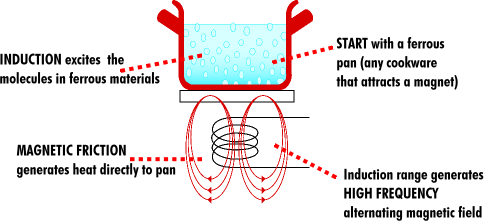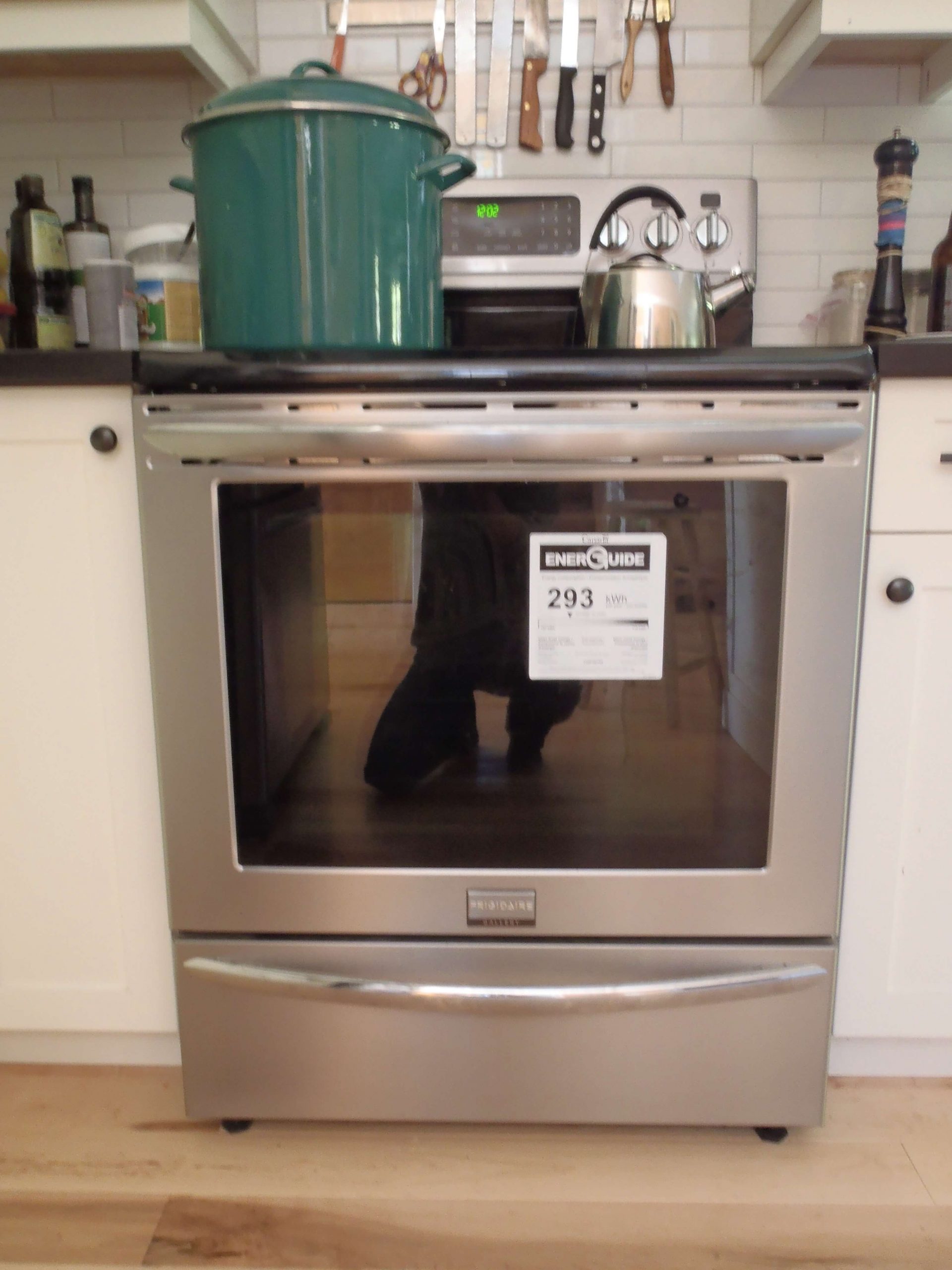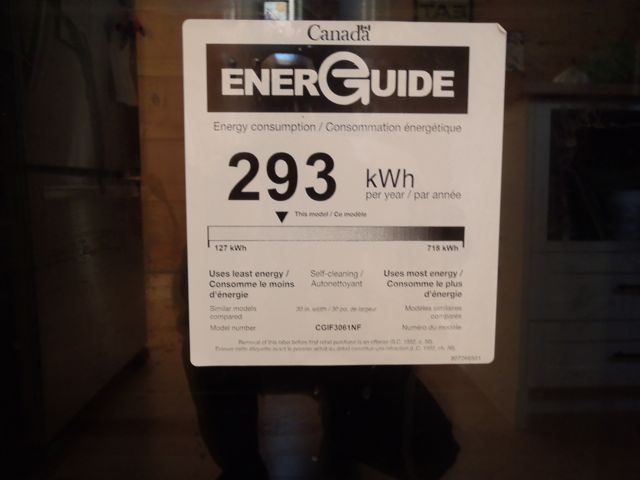When it came to choosing a cooking appliance for Canada’s Greenest Home, we were faced with a conflict in approach. Most homes that aim for net zero energy consumption will choose to use natural gas ranges and ovens, and take the cooking loads away from the electrical load calculations. However, the Living Building Challenge dictates that no combustion-style devices may be used to get the Energy Petal in their certification, requiring us to use an electric device of some kind.
We’d heard about induction ranges for a while, but had never had a chance to use one or even meet anybody who had used one. But it was clear that from an energy consumption point of view, induction ranges (especially in combination with convection ovens) have significantly lower electrical draws than conventional ranges.
 The lower electrical consumption comes from the way heat is generated. Rather than using electrical resistance heating, in which a metal element is heated and that element transfers heat to the cookware, induction ranges generate a magnetic field under the cookware, and if the cookware is ferrous (ie, a magnet will stick to it) the strong magnetic field causes the atoms in the cookware to get excited and generate heat. Therefore, an even amount of heat is distributed across the bottom of the cookware, and no heat is generated anywhere other than the cookware.
The lower electrical consumption comes from the way heat is generated. Rather than using electrical resistance heating, in which a metal element is heated and that element transfers heat to the cookware, induction ranges generate a magnetic field under the cookware, and if the cookware is ferrous (ie, a magnet will stick to it) the strong magnetic field causes the atoms in the cookware to get excited and generate heat. Therefore, an even amount of heat is distributed across the bottom of the cookware, and no heat is generated anywhere other than the cookware.
Canada’s EnerGuide rating system shows that most freestanding, 30-inch ranges use between 470-515 kilowatt hours per year of average use. In comparison, the Frigidaire induction range we chose has an EnerGuide rating of 293 kilowatt hours per year, representing a savings of 177-222 kilowatt hours per year. This is a substantial decrease, probably the single biggest savings that an appliance choice can make. With our 5 kilowatt photovoltaic array, that represents between 35-44 hours of peak production from the panels that can be used of offset other uses in the home!
So from an energy use point of view, the induction range is great. But how about in daily use?
We’ve been extremely impressed with the induction cooktop, enough so that I would definitely install one in another home. Cookware heats up very quickly. A kettle of water boils in a remarkably short amount of time (no more getting a little chore done while the kettle comes to boil!), and in general temperature is imparted to the cookware in a surprisingly short amount of time. Heat in the cookware is completely even, with no hot spots in the middle of the pan and cooler spots around the edges. Changing the temperature setting causes an immediate change in the pan (which is usually touted as the advantage of cooking with gas). Simmers are easily achieved and work well. No heat is lost around the edges of pots or pans, and the cooking surface is not directly heated, so the surface is quite safe to work on. When a pot or pan is lifted from the surface or the dial turned off, there is no more heat.
We haven’t experienced any major drawbacks. There is a slight buzzing noise that accompanies turning on an element, and it’s loudest at the “Power Boil” or high setting. Under all but the very quietest conditions, this is barely noticeable, about on par with a “buzzing” lightbulb. If our tankless hot water heater is on at the same time, the noise is louder (not sure why). I wouldn’t consider this a drawback, just something we’ve noticed.
Dr. Magda Havas from Trent University (and who does a session with Endeavour’s full time students) warns of some potential issues from exposure to the magnetic fields generated by the cooktop. This is not an issue that has received much attention or testing, but the small amount of testing available seems to indicate that keeping a reasonable distance between the body and the element (the Swiss government suggests 5-10 cm) minimizes exposures. While this exposure does not concern me greatly (wireless internet is a much more pervasive and problematic threat, and we wired this home with ethernet cable to every room to avoid the need for wireless), I would not install an induction stove in a home for someone with electrical sensitivity.
Some of our cookware is not usable on the induction range (anything with an aluminum base), but all of our favourite pots and pans work just fine. The heavier/thicker the bottom of the pot or pan, the better it seems to work.
Changing the appliance we cook with was not something I expected to notice much or appreciate, but it turns out to be a rare case of an energy saving device also being a better functioning device.

